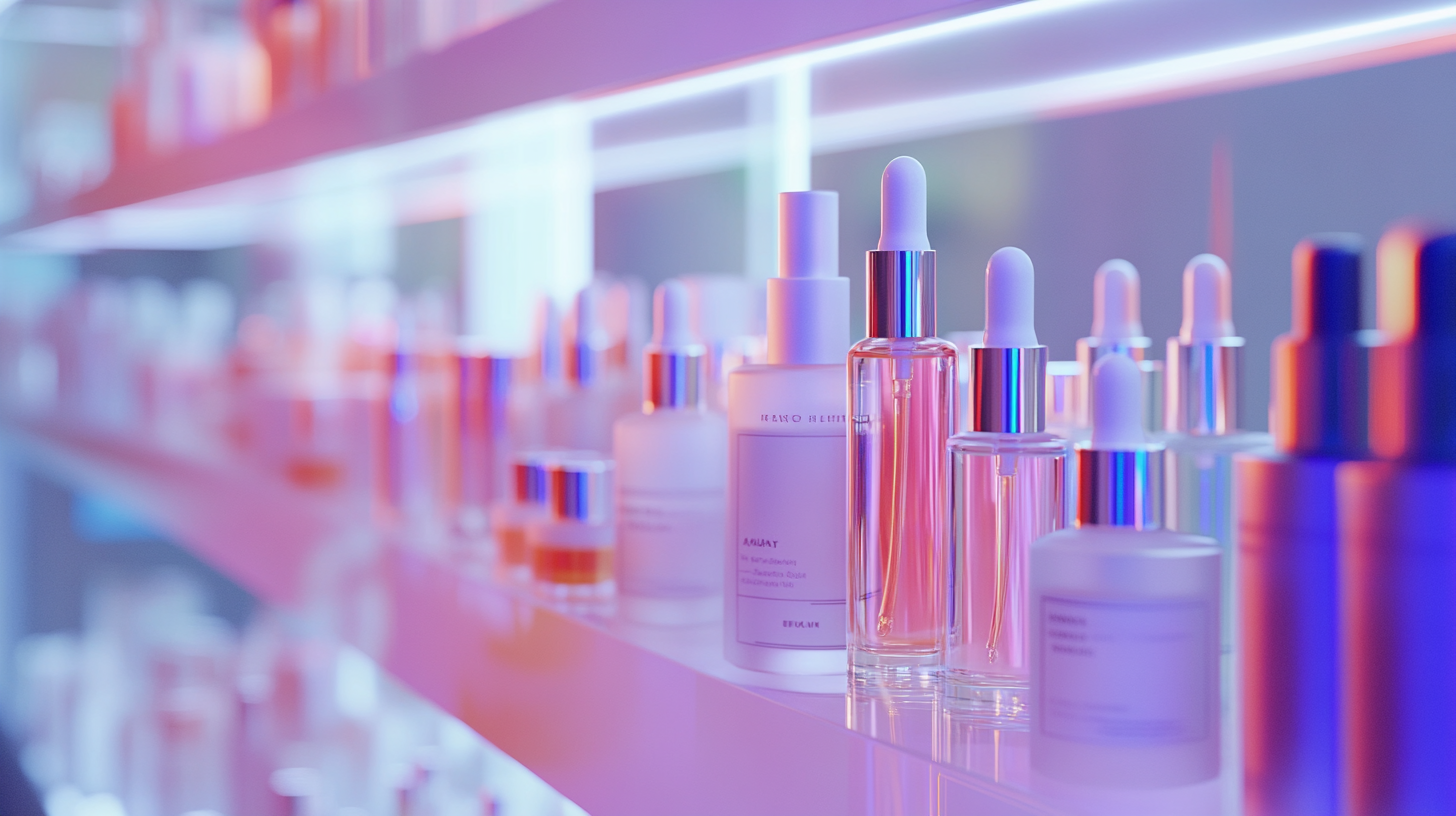Future Innovations in Skin Cosmetics A Comprehensive Guide for Global Buyers
The flourishing sectors within the cosmetic industry today and over the last ten years are skin care cosmetics. In its report, Grand View Research reported that the global skin care market would reach USD 189.3 billion by 2025, expanding at a CAGR of 4.4%. As consumers become more sophisticated in their pursuit of products that both beautify and care for the skin, evolving formulations and ingredients would define future trends in skin cosmetics, which will receive further attention as technology and innovation take center stage.
It is therefore paramount that now more than ever, global buyers solicit understanding about the relevance of emerging innovations. Clean beauty, personalized skincare and biotechnology innovations are changing expectations and must have product criteria among consumers as well. According to a study conducted by Euromonitor International, 58 percent of consumers expressed their willingness to pay more for packaging and skin care products that have eco-friendly ingredients, in effect furthering the concept of sustainable beauty. Such a guide is intended to serve buyers by informing them of the very latest innovations and market trends-all for the sake of remaining competitive in the best-of-the-best skin cosmetics arena.

Emerging Technologies Transforming Skin Cosmetic Formulations
As cosmetic science, especially in skincare, rapidly changes, the new technologies have changed formulation practices and increased efficacy. Biotechnology stands front and center in these changes, allowing brands to fabricate ingredients that articulate with natural skin processes: bioengineered peptides and plant extracts that enhance skin health while being gentle on the environment. The mushrooms of biotechnological diffusions therefore pave the path for sustainable formulations, fulfilling the consumer need without compromising quality. Another pattern gaining traction in skin cosmetic formulations is placing AI and data analytics at the center. This means brands are employing AI to dissect consumer inclinations and skin requirements, allowing for transmitting targeted product solutions. This also can fast-track the formulation of tailored solutions: products rationalized for individual skin types and conditions. The new era of product development for cosmetic solutions that are personalized for precise consumer needs has emerged with AI's competency in ingredient effectiveness predictions. Advanced drug delivery systems have contributed to enhanced penetration of active ingredients across the skin barrier. By nanotechnology, micro-particles are created to bolster absorption path to the skin for the best gain by the users from their skincare regimes. These developments help to efficaciously fortify currently existing products and give new prospects for formulation area in skin cosmetics. These technology trends shall cook the new path for the foreseeable future of skin cosmetics, thus popularizing advanced skincare that is available to the average consumer.

Sustainable Ingredients: The Future of Eco-Friendly Skin Care
The promotion of sustainability within skin care in recent years has meant an increasing demand for eco-friendly ingredients. This increased awareness among consumers regarding the environmental impacts caused by beauty products has led brands to take a look at the power of natural and clean formulations. Along with these sustainable ingredients come new product introductions enabling consumers to adopt a skincare routine that is effective and environmentally conscious.
This infusion of natural resources into the skincare products is another example of the trend. As the skincare market worldwide is predicted to touch a fanciful $115.65 billion by 2024, brands will want to put money, research, and development into more sustainable formulations to keep up with changing consumer demands. From a market-theoretical point of view, a point of view that tries to address any reasonable business concerns regarding the environmental consequences of their offerings and lifestyle, natural energy from botanicals became a brand promotional avenue worthy of any brand seeking distinction in an overcrowded marketplace. This is recognized at different industry events as trends are filtering in focusing on clean beauty and eco-friendly practices.
Also, multifunctional benefits in skin-qare products from plant and fruit extracts have become appealing to consumers desiring safe and effective beauty solutions. Logically buyers are becoming health-conscious and this has led to a rise in herbal or natural products; thereby creating fierce competition among brands to develop sustainable innovations that charm eco-conscious consumers. Natural and holistic-oriented brands help create new spaces for consumers ready to allow their skincare choices to be compatible with their principles.

Personalized Skincare: Tailoring Products to Individual Needs
Now personalized skincare is evidently the major breakthrough in the cosmetics environment for customers offering personalized skincare products customized according to their skin concerns and goals. One-size-fits-all disappears because the consumers today demand products that would consider their skin type, skin texture, skin sensitivity, and environmental effects. It has put a premium on understanding each lifestyle and skin need and given brands the know-how for customised effective solutions that boost the efficacy of the products.
Technology is what makes this possible- AI-enabled skin assessments such as genetic tests or diagnostic tools, all enabling a consumer to make scientifically-wise choices for his skincare routine. Brands have already taken advantage of consumer insights and offered custom formulations that promise to tackle concerns such as acne or aging, or treat hyperpigmentation. As the public learns to be mindful of the health of their skin, the market will continue getting bigger and demand for personalized products continuously rises.
There is also the rise of clean beauty and sustainability. Consumers are now more interested in brands not just because their products have been proven effective but also because the consumers believe the brand's values make them ethically right and safe. This challenge has now been taken up by personalized skincare brands, ensuring that green ingredients are used to develop sustainable packaging yet at the same time making sure that products are safe and effective. This wholesome approach would help brands differentiate themselves from the rest in a crowded market and forge a closer bond because their customers appreciate authenticity and transparency in such beauty matters.

Trends Driving Consumer Choices in Skin Cosmetics Worldwide
Involved things that leases these companies owe to international beauty markets are promised to explode from 115.65 billion dollars in the coming year, 2024. And as the trend continues, adaptation will occur, such that the country is still China. Indicated by the foregoing data, in 2024, more Chinese beauty consumers are into holistic and personalized approaches to skincare and health-imbedding, increasingly because of the rising light medical aesthetics, coupled with an ever-expanding self-care trend. The traditional lines become blurred with such evolving categories of what is skincare, haircare, and fragrance since consumers are calling for solutions that cater to highly personal needs.
In addition, the world's face masks will culminate to $38.99 billion by age 2024. The forthcoming advancements in the mask product sphere are expected innovations for better results, personalized experiences with the skin and environmental footprints into the future. As increasing numbers of consumers become picky, the need for scientific proofs for efficaciousness continues to drive markets. In this context, the skincare segment remains very strong, having projected growth of more than 4.5% between 2023 and 2032.
Next to the very obvious emerging trends above, the truth is that the aging population provides the greatest opening for the beauty industry, which happens to be ushering the silver economy into yet another blue ocean of opportunity for cosmetics brands. So, as many brands have started meeting this market, understanding older consumers' specific requirements will play an important role in shaping product development and marketing in the years to come. All these coming together will redefine how the future of global skincare and cosmetics gets defined- personalization, effectiveness, and demographic shifting.
The Role of AI and Data Analytics in Cosmetics Innovation
Artificial intelligence and data engineering are now the lifeblood of innovations and consumer experiences in a highly dynamic cosmetics world. A recent report states that the cumulative global market for AI in cosmetics is expected to grow into a $1.25 Billion place by 2025, indicating the increasing dependence of technology on development and personalization of products. Under this progressive stance, brands work with these tools in swift moves for the fine shifts towards data-driven prescription or strategy formulation with respect to specific consumer needs.
As signs of digital transformation for major cosmetic companies, Chief Digital Officers have been appointed. These high-ranking officials will, among other roles, utilize analytical insights to better product formulations and boost supply chains. For example, the collaboration between tech companies and cosmetics giants has paved the way for groundbreaking discoveries in active ingredient effectiveness to spur research studies into their mechanisms with respect to skin-showers.
Furthermore, generative AI technologies are being integrated by brands into their product development processes. Thus, the implementation of AI-derived solutions not only guarantees sustainable practices by optimizing materials but also helps minimize waste as well as energy consumption. Cosmetology is now witnessing this innovation in performance as it increasingly responds to the developing consumers' needs for eco-friendly products as well as making a dramatic shift in the industry's future while the world continues into the year 2025.
